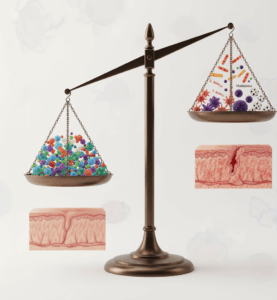 Sharing specialist information on child health is useful, especially when economic factors, or the influence of the web bring concerns.
Sharing specialist information on child health is useful, especially when economic factors, or the influence of the web bring concerns.
The Academy of Medical Sciences, which represents researchers and scientists, recently reported on early years child health in the UK.
They focused on issues such as obesity, or mental health and accused society of betraying children. The pandemic and increased cost of living were partly blamed, along with long waiting lists and delayed care.
This can include skin conditions, with young people of all ages turning to the internet for advice. As a study highlighted by the British Association of Dermatologists shows, the ideas they see may not help.
An investigative team focused on popular YouTube dermatology videos, which are often seen by younger viewers. Two thirds were found to be of poor quality, almost half misleading and over a third potentially harmful.
A disquieting background for young people and their parents, although the situation can look better with a little reflection.
The Reality Of Normal
The media and online world tend to highlight problems, or try to convince everyone that any slight skin imperfection is a disaster. Promoting the idea that we should all consider flawlessness to be the height of attainment.
The British Society for Paediatric and Adolescent Dermatology suggest a different focus, that skin doesn’t have to be perfect to be normal.
They point out that in the real world, over 90% of people get spots, or pimples in adolescence, whilst 1 in 5 children suffer from eczema. Normal skin has freckles and moles, attracts a rash occasionally, or the odd scar.
Their view is that skin which never sweats or has a blemish is a Photoshop version, flawless skin is not normal, or a reflection of good health.
Passing skin problems are however a normal part of childhood and may not require medical attention. Odd spots, redness, or rashes which go quickly and are not seen again need not always bring concern, although other issues need more thought.
When Care Is Needed
We all appreciate that children’s skin is more vulnerable than most to unwanted conditions. Eczema is common, other conditions from hives, to acne, vitiligo, or psoriasis can appear and cause distress.
If you suspect those, or other medical issues, seeing a dermatologist for diagnosis and treatment is a priority. Advances in technology and a consultants knowledge can bring prompt diagnosis and treatment, which are of medical value.
A few issues can still persist to a degree, not every skin condition has an immediate cure but symptoms can be controlled, making life more pleasant and manageable.
High quality paediatric dermatology is about focusing on a child’s life. This includes considering sleepless nights, how they feel about their condition, whether activities are affected, their relationships with peers.
Each of those matters, along with a child being confident in their own skin, through knowing that what they are experiencing is not abnormal.



